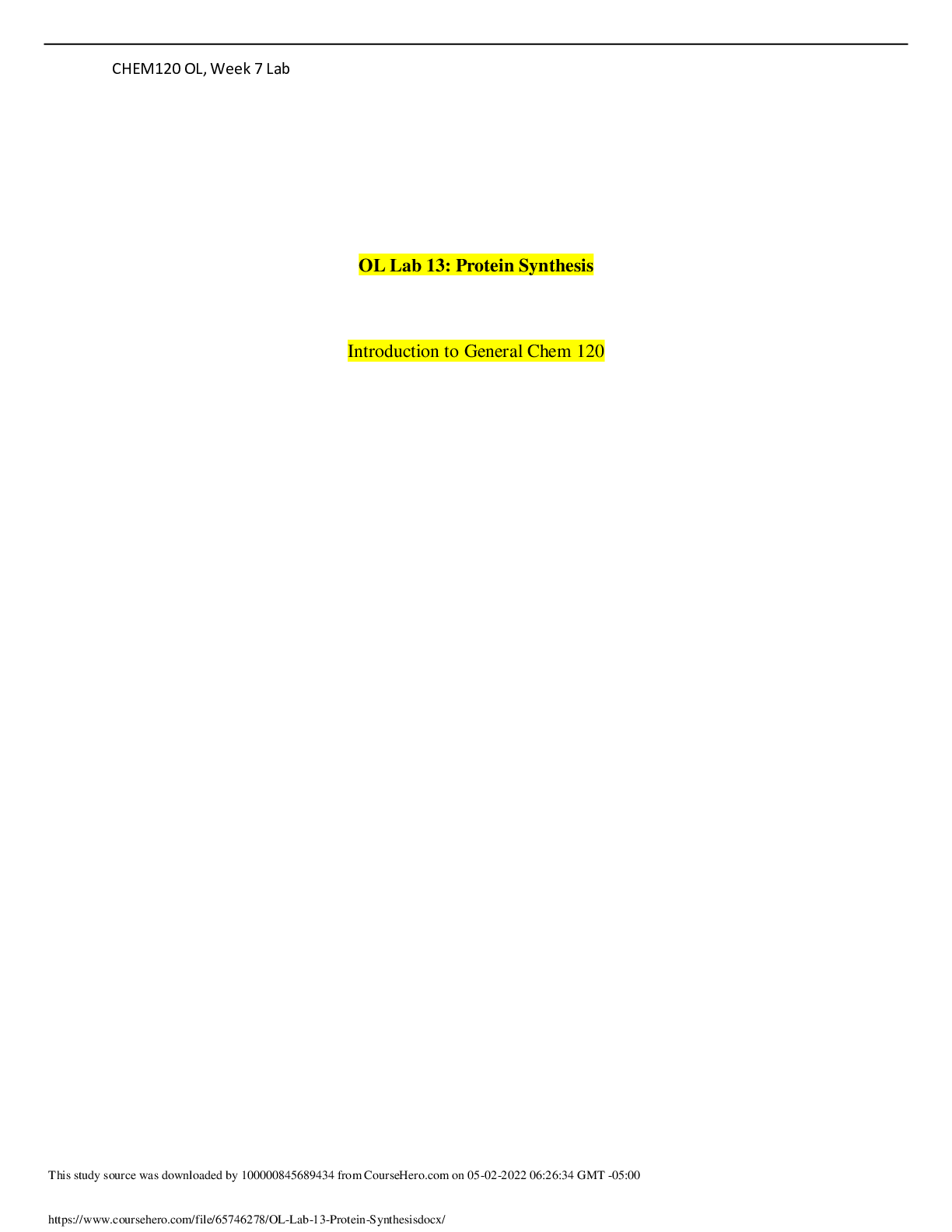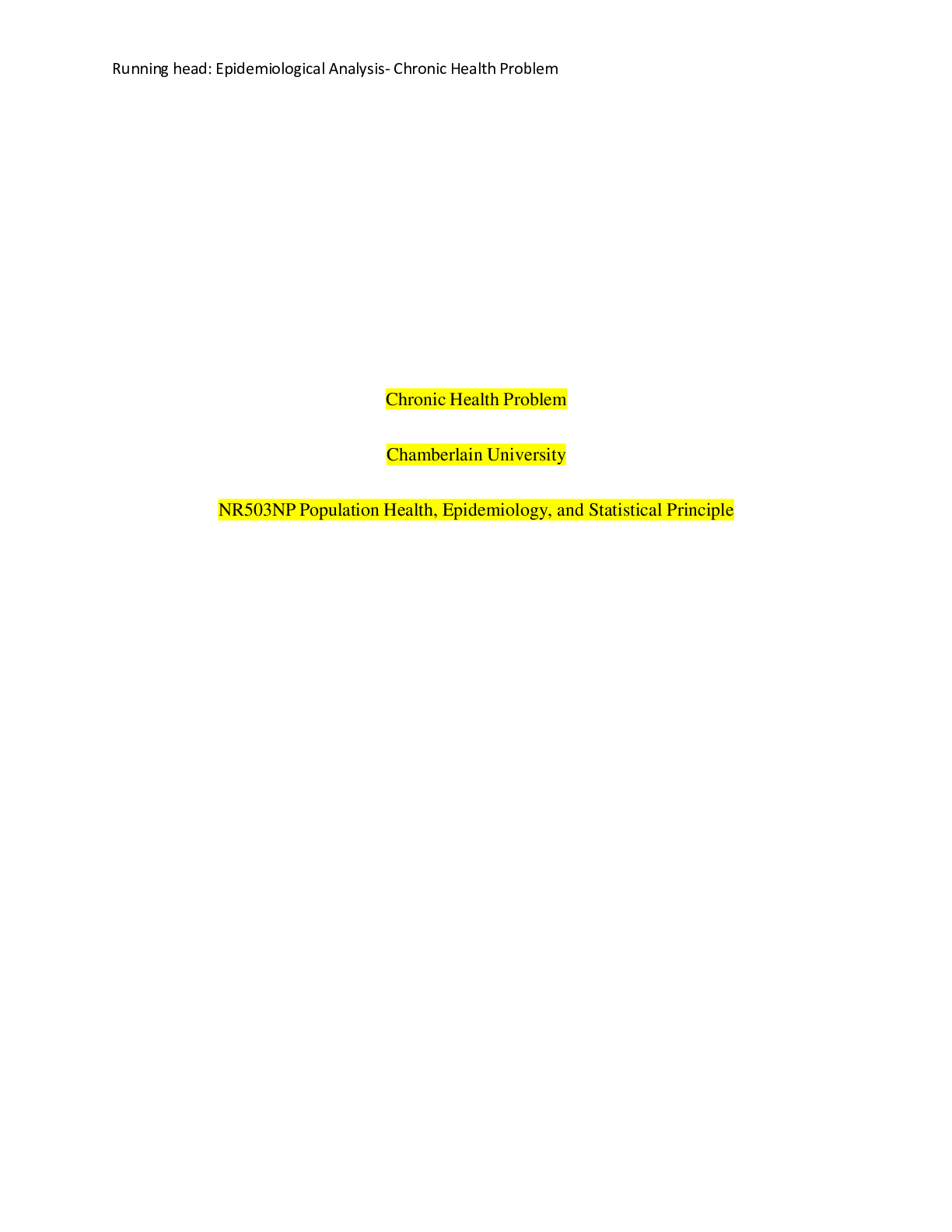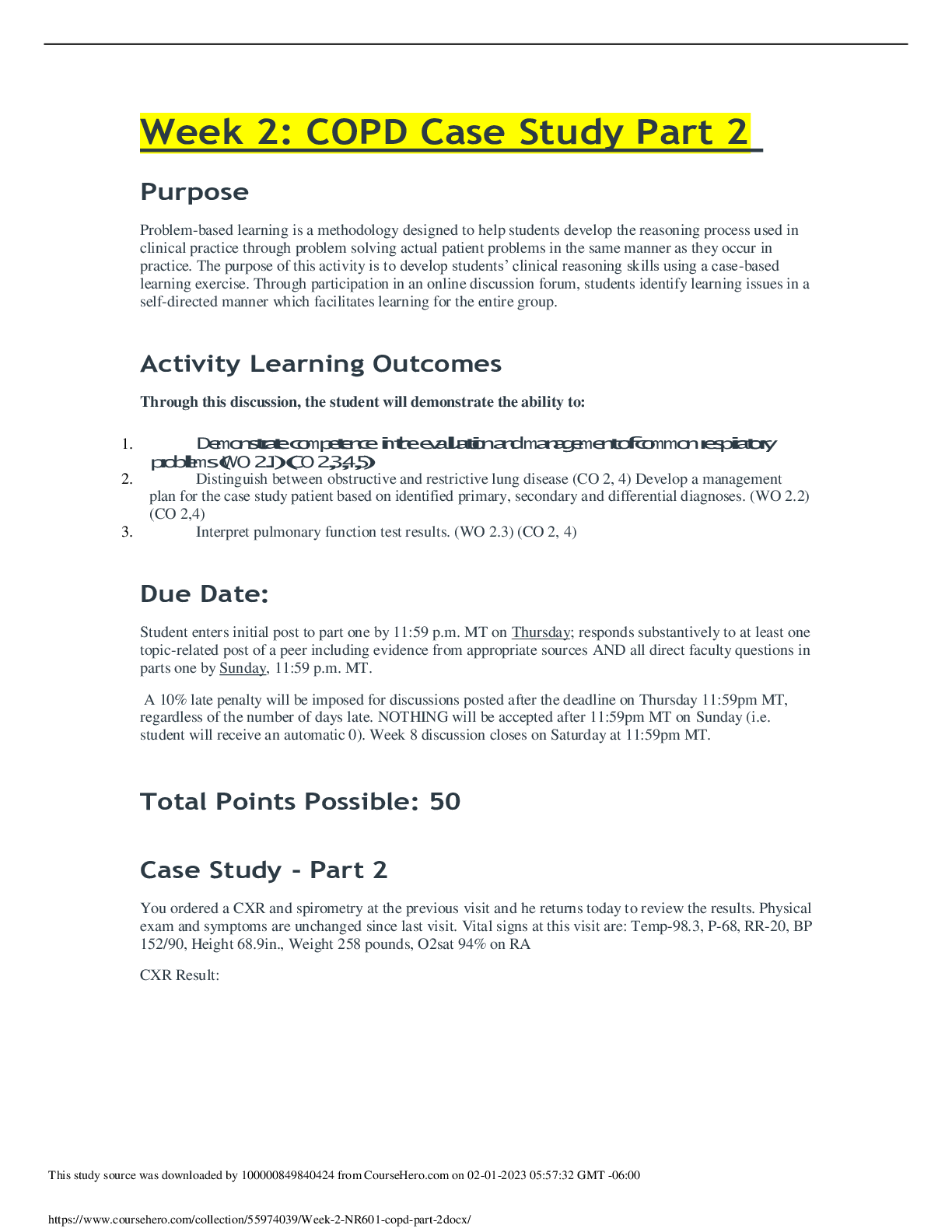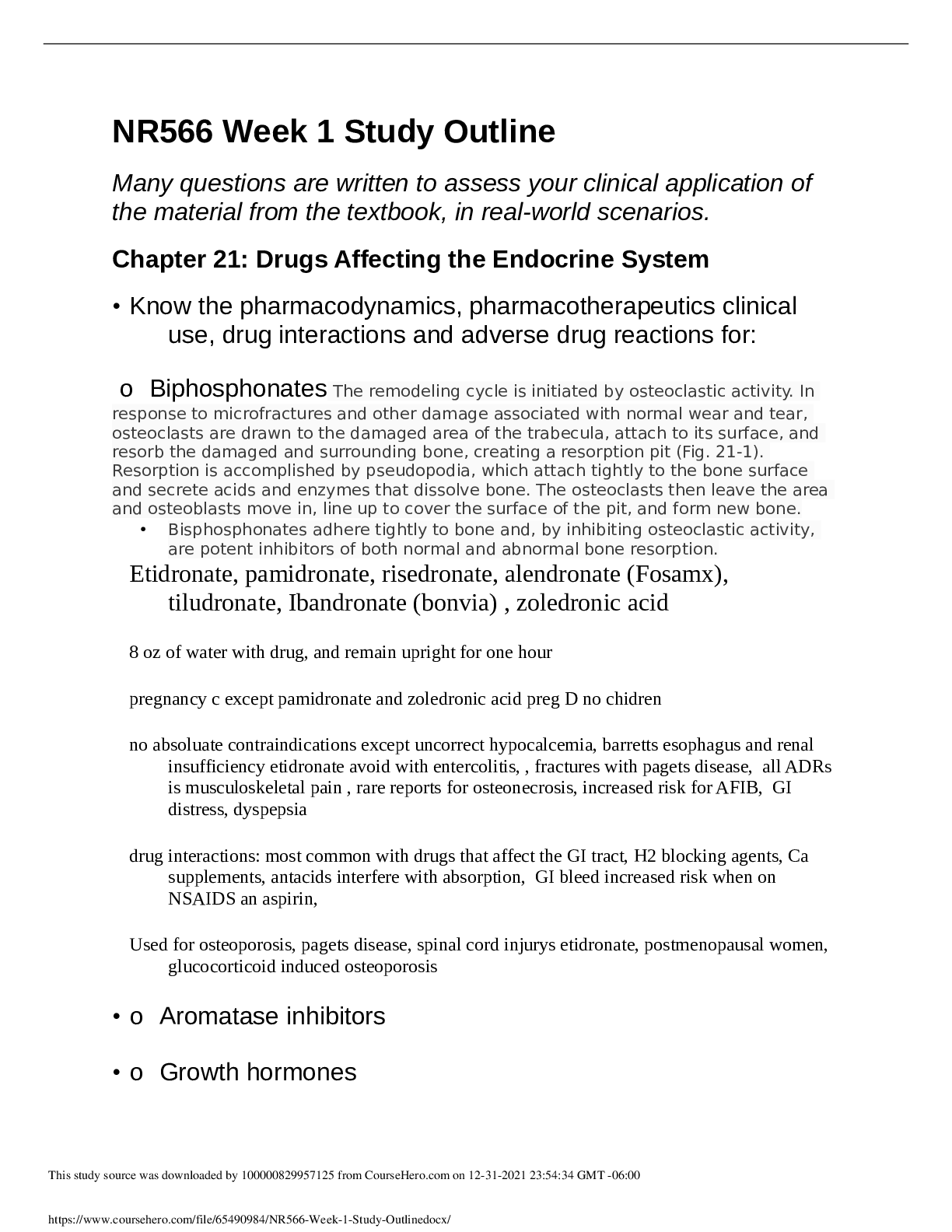Chemistry > CASE STUDY > CHEM 120 Unit 7 Lab: OL Lab 13: Protein Synthesis (GRADED A) (All)
CHEM 120 Unit 7 Lab: OL Lab 13: Protein Synthesis (GRADED A)
Document Content and Description Below
OL Lab 13: Protein Synthesis Introduction to General Chem 120 Learning Objectives • Explain the translation process from mRNA to amino acid • Explain post-translational modification of... proteins • Explain protein synthesis processing in the ribosome • Explain the primary, secondary, tertiary and quaternary structures of protein • Explain the basic principles of mass spectrometry (MALDI-TOF) Introduction In the Protein Synthesis lab, you will learn about the difference between protein synthesis in prokaryote (using E. coli) and eukaryote (using Chinese hamster ovarian (CHO) cells). Prepare recombinant Erythropoietin and use the mass spectrometer Your first task in the lab will be to prepare recombinant erythropoietin (EPO) that is transfected into E. coli and CHO cells. The lab assistant will prepare the recombinant EPO and you will measure the mass to charge ratio using a mass spectrometer. Not sure how to handle the mass spectrometer? No worries! You can just take out your labpad and find an animated video to learn the basics. Study the translation process from mRNA to amino acids You will also learn about the translation process from mRNA to amino acids and how amino acids are assembled to proteins. A 3D animation will describe how codons are translated into amino acids, how these amino acids are joined together by peptide bonds creating a primary structure of protein, and how the primary structure is folded into secondary, tertiary and quaternary structure. Investigate doping in bike athletes In the last part of the Protein Synthesis lab, you will use mass spectrometry to investigate if any athletes are using recombinant human erythropoietin (rhEPO) as a doping substance. You will do so by collaborating with the doping agent who collects urine samples at a large bicycle race. Will you be able to detect if any of the athletes are using doping? Part 1: Complete Labster Lab: Protein Synthesis Part 2: Report and Reflection Purpose: Describe in complete sentences and in your own words, the purpose of this experiment. With this lab we are going to be learning the basics of protein synthesis and having to help patients with chronic kidney disease. We will also be using a drug screening to catch someone who is using a drug. Observations: Record three observations from the simulation. We are observing kidneys, and, in this lab, it is explaining the use of the kidneys. They filter out our blood and prevent any waste and extra fluid. Because this is a simulation, we can see the metabolic process and learn about the hormone EPO on how it is essential to produce red blood cells. When you have kidney disease, they kidney changes color and you can see that there is REP all over the kidney cortex Answer the questions below: 1. In your own words, describe the process of gene expression beginning from the nucleus to the formation of the polypeptide sequence. Gene expression is a process that DNA is directing the synthesis of proteins, sometimes this is in RNA. There are two stages for proteins which are transcription and translation. Which in this process the strand that is given is being translated into mRNA, and then by matching each letter to the corresponding one, and using the 3 letter sequence to find the proper codon that will give you the sequence. 2. Complete the table below: Nucleic acid Amine Bases Present Location(s) in cell DNA ACGT Nucleus RNA ACGU Cytoplasm 3. Assume that RNA Polymerase will read the parental strand of DNA given here and write the mRNA sequence that would result: - TATGCTTCCGTA – The sequence would be AUA CGA AGG CAU 4. Reflection: Consider what you learned from this simulation. Reflect on three to four key concepts that you learned in this lab exercise. How could the lessons learned in this virtual lab relate to a real-world situation in the community/world or your future career? Be specific in your answer (this should require 5-10 sentences). In this lab it is showing us what chronic kidney failure is and you can virtually see on how it is affecting someone’s body. As a nurse you need to know why chronic kidney function is fatal and why patients who have it become anemic. This teaches us that because of the loss of REP function the patient’s kidneys cannot produce EPO. In this happening an EPO deficiency will reduce the production of red blood cells and this makes the patients become anemic. When I get my degree I will be working in the ED and using the anti-doping agent will probably be a normal for me because you get people from all walks of life and you need to know how to handle them. EPO increases the mass of red blood cells with increases the amount of ATP that is available therefore improves physical performance. Grading Rubric: Activity Deliverable Points Part I Complete simulation and answer all questions 9 Part II Complete lab report and answer questions • Purpose (1 point) • Observations (3 points) • Questions (3 points) • Reflection (2 points) 9 Total Complete all lab activities 18 [Show More]
Last updated: 2 years ago
Preview 1 out of 5 pages

Buy this document to get the full access instantly
Instant Download Access after purchase
Buy NowInstant download
We Accept:

Reviews( 0 )
$9.50
Can't find what you want? Try our AI powered Search
Document information
Connected school, study & course
About the document
Uploaded On
May 02, 2022
Number of pages
5
Written in
Additional information
This document has been written for:
Uploaded
May 02, 2022
Downloads
0
Views
131
















